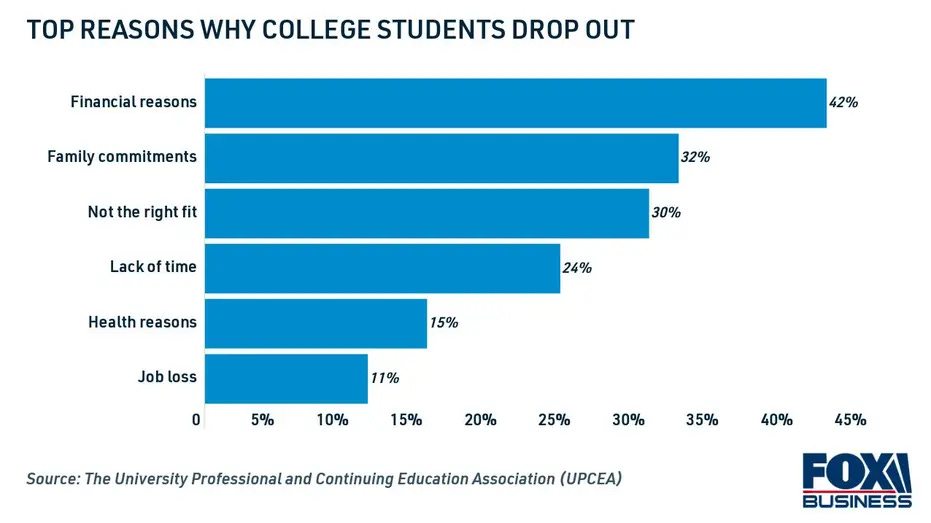The Business of Higher Education: Unveiling the Lucrative College Industry in the USA
Beyond the degrees: Exploring the economics of American higher education, dissecting revenues, and revealing where your tuition dollars truly go.
Explore our free monthly magazine for a richer research experience! 📚📈 Dive into in-depth content, examples, stats, and graphs. Subscribe to Business Hub for monthly deliveries! 🆓
Summary:
The Lucrative Landscape of Higher Education
Main Players in the College Industry
Breaking Down the Revenues
Profit Margins and Financial Challenges
Where Does the Money Go?
Navigating the Future
Conclusion
The Lucrative Landscape of Higher Education
The college industry in the United States has evolved into a lucrative and complex economic ecosystem. In the 2021-2022 academic year, the total revenue generated by degree-granting institutions reached a staggering $706 billion, showcasing the substantial financial scale of the higher education sector. With over 20 million students enrolled in degree-granting institutions, colleges and universities have become major players in the U.S. economy.
The average cost of attendance for a student living on campus at a public 4-year in-state institution is $26,027 per year or $104,108 over 4 years. Out-of-state students pay $27,091 per year or $108,364 over 4 years. Private, nonprofit university students pay $55,840 per year or $223,360 over 4 years. (Educative data Initiative)
Main Players in the College Industry
Prominent players in the higher education sector include both public and private institutions. Noteworthy public universities like the University of California and private institutions such as Harvard University are at the forefront. In the 2019-2020 academic year, Harvard, for instance, reported a total revenue of $5.6 billion, highlighting the immense financial stature of top-tier private universities.
Src: WordsRated
Breaking Down the Revenues
When you pay for college, your tuition dollars contribute to a multifaceted revenue structure. Tuition and fees constitute a significant portion, accounting for $341 billion in the 2021-2022 academic year. Additionally, state appropriations, federal grants, private gifts, and endowment earnings collectively contribute to the financial health of institutions. The diverse revenue streams enable colleges to fund academic programs, research initiatives, campus facilities, and student services.
Even with endowment support, Harvard must fund nearly two-thirds of its operating expenses ($5.9 billion in fiscal year 2023) from other sources, such as federal and non-federal research grants, student tuition and fees, and gifts from alumni, parents, and friends. (Harvard)
Profit Margins and Financial Challenges
While the college industry generates substantial revenue, not all institutions operate with a profit motive. Many nonprofit and public universities prioritize educational and research goals over financial gains. However, for-profit institutions, driven by market forces, focus on generating profits. The industry, as a whole, faces financial challenges, including rising costs, reduced state funding, and increasing pressure to provide affordable education.
Src: Fox Business
Where Does the Money Go?
When you pay for college, your funds are allocated to various areas. Instructional expenditures, including faculty salaries and academic support, account for a significant portion. Additionally, funds are directed towards institutional support, student services, and maintaining campus facilities. Understanding the allocation of tuition dollars sheds light on the diverse needs institutions must address to provide a comprehensive and high-quality educational experience.
Src: Quora
Navigating the Future
The landscape of higher education in the U.S. is continually evolving. The industry faces ongoing debates about affordability, accessibility, and the role of technology in education. As stakeholders grapple with these challenges, understanding the economic dynamics of the college industry becomes crucial for students, educators, policymakers, and the public alike.
It's not a matter of extinction but adaptation. The traditional four-year degree may no longer be the default path to success, but higher education will continue to evolve. Degrees will still hold value in certain fields, especially those that require specialized knowledge and expertise. (Linkedin)
Conclusion
In conclusion, the college industry in the U.S. is undeniably lucrative, with a complex financial structure supporting a diverse range of institutions. As the landscape continues to transform, an informed perspective on the economic dimensions of higher education is vital for shaping the future of learning in the United States.
Src: USNews
In 2020–21, total revenues at degree-granting postsecondary institutions in the United States were $993 billion (in constant 2021–22 dollars). Overall, total revenues for postsecondary institutions were 33 percent higher in 2020–21 than in 2019–20 ($993 billion vs. $745 billion) (National center of education)
How do you envision the future of the U.S. college industry, considering its economic complexities and the ongoing challenges of affordability and accessibility?
let me know in the comments.
📰🚀 Stay informed with our daily economic insights! Subscribe now for concise updates. ❤️ Help spread knowledge!
Disclaimer: Please note that I am not a financial advisor and the information provided is my personal opinion, and should not be taken as professional financial advice.









